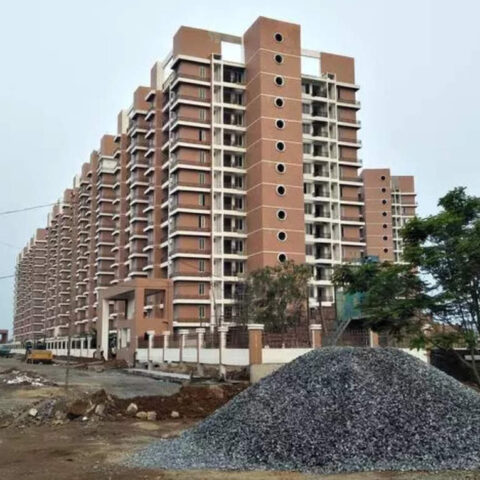Despite an expanding pipeline, data centre demand continues to outpace supply across the Americas, resulting in consistently declining vacancy rates.
North America has rapidly continued its high growth trajectory, reaching 18.5 gigawatts (GW) of operational capacity with 1.7 GW of new capacity added in the first six months of the year, according to Cushman & Wakefield’s new Americas Data Center H1 2024 Update report that highlights Canada’s two largest data centre markets: Toronto and Montreal.
With power and component lead times constraining delivery of new supply, vacancy region-wide has fallen to three per cent and pushed lease rates higher.
Absorption is poised to surpass the record levels set in 2023 due to interest in the deployment of artificial intelligence (AI). Much of this absorption has come from pre-leased and built-to-suit projects, which made up 78 per cent of delivered centres.
“We definitely saw a decline in speculative data centre investment, especially since (interest) rates started to increase,” Cushman & Wakefield associate vice-president Michael Borron told RENX. “These are incredibly expensive facilities to develop, so having an anchor tenant or some pre-leasing does a lot to get a project off the ground.”
Different categories of data centres
There are four main categories of data centres, according to Borron:
- hyperscale facilities, which are generally newer and operated or tenanted by global technology companies. These can range from single buildings providing 20-plus megawatts to large campuses with several buildings;
- colocation facilities, which are generally smaller and often located in infill sites, though they can be part of campuses as well. They’re operated by third parties that provide various levels of service to users, from just space and power up to a full range of options;
- carrier hotels, which are generally located close to population and city centres, are essentially fibre interconnection points where Internet service providers post information and data is interchanged;
- and graphics processing unit (GPU) and AI cloud-providing facilities, which have greater power density. Some are at least as large as hyperscale data centres, which are built to provide between 10 and 20 kilowatts (KW) per server rack, but offer more than 100 kilowatts per rack and need more power infrastructure and cooling.
Choosing data centre locations
Much of the newest capacity was delivered by hyperscalers for cloud expansion as well as for the computation and storage of AI deployments across a host of verticals.
“A lot of the cloud growth that we’re seeing now is to provide cloud services to the local population,” Borron explained. “Where there’s a little bit more flexibility on where to locate is on the AI and GPU side.
“They don’t necessarily need to be in one market or another. Those users are moving towards power availability and low cost of power buckets.”
Power availability is the greatest consideration for data centre developers, and Quebec has been popular for its relatively inexpensive hydro-electric energy capacity. It has a lack of availability at the moment, however, due to demand from other types of users and the difficulty in getting connections.
“With the limitations in Quebec for power right now, a lot of Canadian demand will look to Ontario,” Borron said. “It’s a good opportunity for the province to capture quite a bit of demand.”
Finding the right sites for data centres is often more challenging in Canada than the United States, according to Borron. He cited higher land costs, longer entitlement processes, environmental approvals and geography as key reasons why.
Toronto
Toronto has the third-highest population of any city in the United States and Canada, placing it one spot in front of Chicago. But despite being Canada’s largest data centre market, Borron said Toronto has just one-third the built capacity of Chicago and about one-third of its development pipeline.
With 34MW of absorption so far, Toronto is on pace to match similar levels of leasing activity as last year. Vacancy inched downward to four per cent from five per cent in the second half of last year.
With limited capacity coming online in 2025 while demand remains consistent, there will be continued pressure pushing vacancy lower. Large-capacity facilities continue to be pre-leased well before completion.
“We’re geared up for investment,” Borron noted. “It’s just a matter of getting those projects off the ground and getting a pathway to power for them.”
Colocation activity continues to be strong as providers such as Digital Realty, Equinix and Cologix have steadily grown their portfolios in the market.
STACK Infrastructure and Compass Datacenters have been building significant hyperscale facilities, while only Microsoft has plans to build out a facility. Other hyperscalers are looking farther out to surrounding areas like Kitchener for potential options.
Montreal and Quebec City
Despite slower take-up than in many larger markets, data centre vacancy has remained unchanged in Montreal since the last report at 9.7 per cent. Much of that vacancy is in smaller-capacity centres, as opposed to those with hyperscale capacities that have seen rapid pre-leasing activity.
Vantage Data Centers secured a $75 million construction loan for expanding its QC2 facility in Quebec City, which is pre-leased to a hyperscale tenant.
“Groups that are delivering power are likely going to do very well with that space,” Borron said. “There’s still quite a bit of pre-leasing going on in both markets.
“I expect to see vacancy continue to drop and I don’t expect to see a lot of new supply come to market vacant because of demand.”
Calgary and Vancouver
Calgary and Vancouver are Canada’s next two largest data centre markets but weren’t big enough to be included in the report.
“There’s been significant growth in Calgary recently that’s driven by cloud regions announced by both Microsoft and Amazon,” said Borron.
“With the cost of land in Vancouver, it’s very difficult to acquire a site and structure a deal that works to get power in a way that you can make money. But because of that, the groups that are in Vancouver are doing extremely well with their facilities.”







